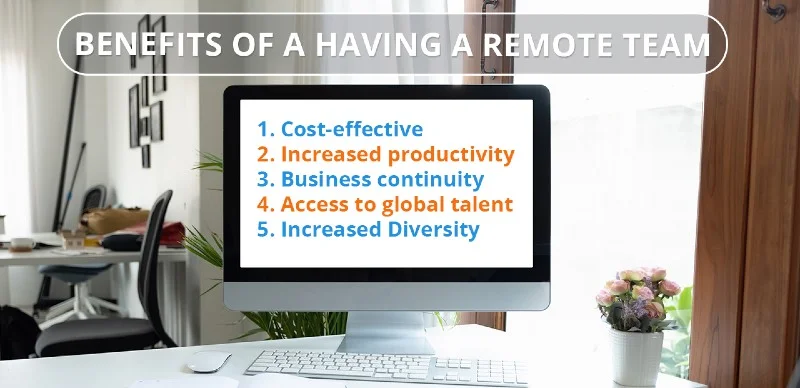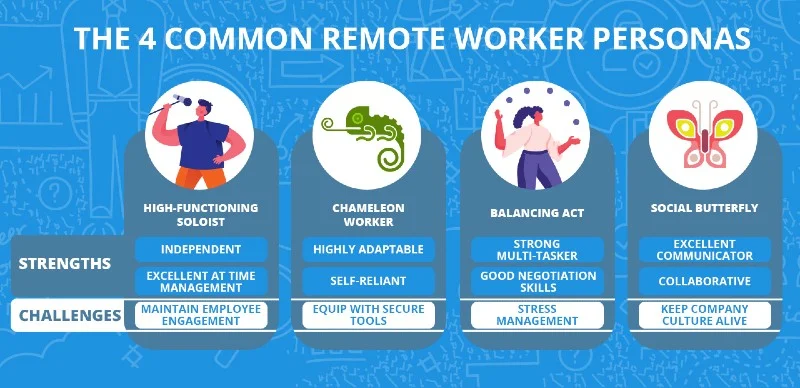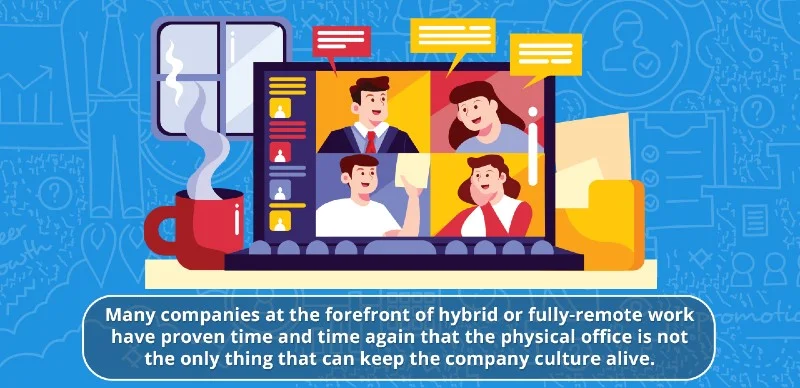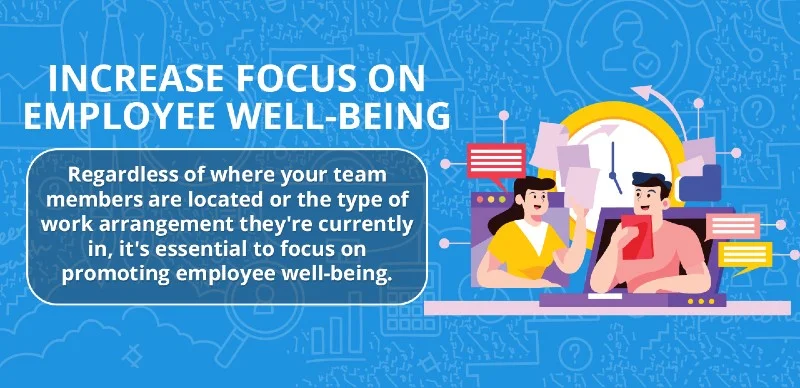The 4 Most Common Remote Worker Personas

For some forward-thinking companies, working remotely has always been an option for their employees. For most, remote work is a relatively new concept that they’re still trying to figure out. But no matter whether your business is an early adopter or new to the remote work scene, knowing how to manage remote workers is relevant now more than ever.
HOW DID WE GET HERE? THE EMERGENCE OF REMOTE WORK
As we’ve mentioned, working remotely isn’t entirely new, but a lot more companies are seeing it as a more typical work arrangement. Additionally, employees also enjoy the flexibility of working remotely. Some are going as far as considering leaving their current role for other opportunities that have remote work arrangements.
BENEFITS OF A HAVING A REMOTE TEAM
Aside from employee demand, there’s a long list of reasons companies choose to work with remote teams. Here are some of the most common benefits of working with a remote team.
-
COST-EFFECTIVE
One of the most compelling reasons companies offers remote work is that it’s cost-effective. With a remote team, businesses don’t have to worry about workplace overhead costs like rent, utilities, and office equipment. Working remotely also allows companies to explore alternative staffing solutions, like hiring virtual assistants for remote support.
Read our article on how hiring virtual assistants can help you combat inflation, or schedule a free consultation with our Growth Experts today!
-
INCREASED PRODUCTIVITY
Productivity does vary per type or worker persona—more on this later. But, reports have shown that allowing employees to work remotely can significantly increase productivity. The elimination of commute fatigue and external distraction contributes to this observed productivity. Additionally, remote workers are free to customize their office setup in a way that can help them focus and perform better. That’s something that’s not necessarily feasible in a traditional in-office setup.

-
BUSINESS CONTINUITY
Working with a remote team allows you the flexibility and adaptability that a traditional in-office setup cannot. Imagine your employees are unable to go to report to the office for an extended period (seems familiar?). If you don’t have the flexibility of a well-equipped and trained remote team, your business operations will come to a hard stop. Disrupted business operations can mean zero production at best and business losses at worst.
-
ACCESS TO GLOBAL TALENT
Adopting a remote work setup allows companies to get the right remote workers for the role regardless of location. And suppose you’re partnering with a virtual staffing agency. In that case, you’ll potentially be able to hire remote team members who are specialists in various functions, from marketing to administrative duties to Telehealth support.
-
INCREASED DIVERSITY
This access to a global talent pool can help increase your remote team’s diversity. A diverse remote team can help create a well-rounded and culturally-aware organization. When managed well and encouraged to share their distinct ideas, remote team members can help improve various facets of a business’s operations.
Are you thinking of building your own virtual assistant team? Visit the 20four7VA blog for remote work tips, or schedule a free, no-strings-attached consultation with our Growth Experts today!

HOW TO MANAGE REMOTE WORKERS WITH DIFFERENT PERSONAS
Managing remote employees can seem challenging, especially when you recognize that each persona has different wants and needs. But this can be seen as a positive thing for business owners rather than a showstopper. Here are four of the common remote work personas.
4 COMMON REMOTE WORKING PERSONAS
1. THE HIGH-FUNCTIONING SOLOIST
Remote working is the high-functioning soloist’s preferred work arrangement. It could be difficult to imagine a time when this remote working persona ever worked in a traditional office setup. They’ve tried remote work and found that this setup could eliminate what they consider “fluff” and solely focus on work. This type of team member is not that interested in social interaction, office politics, and long commutes related to the in-office setup. They also enjoy working productively and focusing on the task at hand without a set of eyes behind their shoulders the whole time.
STRENGTHS
- INDEPENDENT: If you’re managing a remote team with a high-functioning soloist, you won’t have to worry about them accomplishing their assigned tasks.
- TIME-MANAGEMENT SKILLS: High-functioning soloists also tend to value work-life balance, so you can count on them to effectively manage their hours. They’ll use their remote working hours to finish a project at hand so they can make the most of their downtime and weekends.
- ABOVE-AVERAGE COMPUTER PROFICIENCY: A high-functioning soloist is relatively low maintenance when it comes to technical support. As long as they’re provided with the right tools for video calls, asynchronous communications, and cloud storage, then they’re all set to accomplish their work remotely.
CHALLENGES AND HOW TO MANAGE THEM
- MAINTAINING EMPLOYEE ENGAGEMENT: High-functioning soloists may not require (or even want) too much water cooler talk and regular check-ins from their managers. However, it’s still essential to have some form of communication with this type of remote worker to ensure that they feel connected to the other team members. It’s also necessary to keep high-functioning soloists engaged.
- TRAINING FOR LEADERSHIP ROLES: They’re a great asset to any remote team, so keeping employee engagement high despite working remotely is crucial. Their skills and independence make them candidates for future remote team leadership positions. They may need to learn more about working with and managing remote teams.
- REWARDING WORK: Managing remote employees that are high-functioning soloists can be considered relatively easy. Managers may overlook or take their top-tier output for granted. It’s essential to recognize excellent work when it’s due. Managers may even consider assigning more challenging tasks to keep high-functioning soloists from feeling like their work is becoming too routine and help them improve their skills.
2. THE CHAMELEON
The Chameleon can adapt to any work arrangement. They can turn on the “social” switch when they need to but are also comfortable with working independently. Employees with this persona are pretty flexible, especially when it comes to when and where they work. One day they can work at a bustling cafe. Next, they can work from home to work on tasks that can require more focus and privacy.
STRENGTHS
- ADAPTABILITY: The Chameleon can work in a traditional work setup, remotely, or anywhere in between. Chameleons don’t mind working from home or the local coffee shop—depending on the type of work they need to do, of course.
- SELF-RELIANCE: Because they’re adaptable and flexible, you can count on your chameleon-type remote team members to get their work done with little or no supervision. These employees recognize the right time to collaborate with their team members through video calls or face-to-face meetings and when to stay in their remote space to finish a task.
- PROJECT MANAGEMENT: Chameleons can bend instead of being rigid with their schedule. They also know when and how to collaborate with other team members. Both are great qualities of remote employees that have good project management skills.
Want to know more about the top skills to look for in a virtual assistant? Visit our website or book a free consultation with our Growth Experts today!
CHALLENGES AND HOW TO MANAGE THEM
- CYBERSECURITY: Remote employees with the chameleon work persona can work virtually anytime and anywhere. This can be great for when you want projects to be done whenever and wherever. But it can also be a challenge for your IT security team. It’s important to train not just chameleons but all employees about the basic cybersecurity practices to ensure they can get the job done without compromising company and client data.
- EFFECTIVE REMOTE WORK TOOLS: Your work tools should empower your chameleon-type remote employees to seamlessly switch from working in a co-working space to their neighborhood cafe to their home office. Make sure your remote work tools can be used on various types of devices, so your chameleon team member can work without missing a beat.
- COMMUNICATE SCHEDULES IN ADVANCE: The almost nomadic work lifestyle of the Chameleon may require you to switch up your remote management style. They could be setting up office in locations that are not conducive for more confidential meetings, or they might even be in different time zones. Given this, you should be more mindful and purposive when scheduling your remote teams’ events or meetings. You should schedule team meetings, whether face-to-face or via video conferencing, in advance. This way, your chameleon team members know when and where they should be working that day to ensure they’re free to talk and listen without spilling company information.

3. THE BALANCING ACT
The Balancing Act is a valuable team member, but they have additional responsibilities at home that can sometimes add to the stress during their work day. Parents of younger children or primary caregivers in their families tend to fall under this remote work persona.
STRENGTHS
- ABILITY TO MULTI-TASK: Imagine minding a toddler while finishing your report and preparing dinner by 7 pm. That’s a usual Tuesday for the balancing act. The ability to multi-task or at least manage multiple responsibilities without letting things fall through the crack is a great strength of those with the balancing act work persona. However, it’s best to refrain from constantly tapping into this strength to prevent burnout.
- NEGOTIATION SKILLS: Parents of younger kids and primary caregivers of their family members have excellent negotiation skills. They must constantly negotiate with their children or family members about not interrupting them while working. They know how to schedule their work around their responsibilities at home without sacrificing too much of either.
CHALLENGES AND HOW TO MANAGE THEM
- FLEXIBILITY: According to a McKinsey report, working parents with younger children are more likely to prefer a work-from-home arrangement or a more flexible working schedule. The employees with balancing act personas are usually the ones who have relatively more work experience. To be able to tap into their expertise and know-how, employers need to recognize the balancing acts’ need for flexibility and time management. Company leaders may need to review their stance on the traditional but arguably outdated 9-to-5 work schedule. Instead, they can explore applying flexible virtual work hours. Except during required regular meetings or company-wide events, employees may log their hours at their most productive working windows. This allows them to give their best both at home and at work.
- STRESS MANAGEMENT: Because they feel like they’re balancing more than one thing at a time, team members with this persona can experience more stress than the other remote employees. As a manager, you should check in with your balancing act team members more frequently. See how they manage their work-life balance and if they need help in any areas.
- LONELINESS: Working parents may tend to search for interactions with their co-employees. To address this, try to schedule more social events for your remote team or create an online space where they can interact with each other outside of work.

4. THE SOCIAL BUTTERFLY
The social butterfly is on the more extroverted side. They’re one of the personas who struggled when they first transitioned to a remote environment. Social butterflies who gain energy from face-to-face interactions with team members tend to feel isolated in a fully remote setup. However, once well-adjusted, they can make the most out of the remote setup to socialize and connect with their remote team members. They do this through video conferencing, asynchronous communication tools, and virtual team-building sessions.
STRENGTHS
- COMMUNICATION SKILLS: Regardless of their work setup, you’ll be hard-pressed to find a social butterfly struggling to communicate and connect with their team members. They’re also effective in client-facing roles or positions that need someone who can present ideas effectively and clearly.
- COLLABORATIVE: Social butterflies are eager to exchange ideas with and help team members. They thrive off of discussions that are both social and productive in nature. They can also be excellent project management leads for assignments that require cross-departmental collaboration.
- LEADERSHIP: This persona can be nurtured and trained to take on management positions because of their inherent ability to connect with people. They are great communicators, meaning they also know how to listen to others’ ideas.
CHALLENGES AND HOW TO MANAGE THEM
- TIME MANAGEMENT: Social butterflies are not always known to be pros of time management. Because they crave social interaction, there may be situations where they focus on the social part of work, even during team meetings. While water cooler talk and non-work related check-ins are essential, setting aside time for focus and productivity is equally important.
Project management and calendar apps are great tools for remote teams with various personas, including the social butterfly. With these apps, team managers are able to ensure that everyone is aligned and on track with their projects while setting aside time to stay connected socially. - STAY CONNECTED EVEN WHEN WORKING REMOTELY: Social butterflies can feel isolated from the rest of the team when working individually for long periods. They may may initially find the lack of face-to-face interaction with colleagues stressful. One way to help them feel connected is to get to know them and see where their strengths lie. They could be assigned to assignments that require collaboration within the team or with other departments. This can help the feeling of working in a silo.
Social butterflies can also be coached to manage remote teams as well. Managers must be able to review the members of their remote teams regularly and identify members who can be potential future leaders. - START ONLINE COMMUNITIES BASED ON PASSION POINTS: Aside from assigning social butterflies to group projects, it’s also important to tap into their passion points. Employers must also be able to maintain a high level of employee engagement despite the distance or difference in time zones. By starting workplace communities or pocket chat groups that talk about their passions outside of work, social butterflies can still feel connected to other team members. Sharing ideas and experiences with people who are just as excited about the latest film or your hobby can improve a social butterfly’s remote working experience.

MAKE SURE THE BASICS ARE COVERED
-
CONSTANTLY COMMUNICATE ORGANIZATIONAL PLANS
A report from McKinsey about “What employees are saying about the future of remote work” states that employees feel anxious when their organization does not communicate with them. Times are already trying, and a lack of direction or vision about work can add to an employee’s stress. The added stress and anxiety can affect productivity, job satisfaction, and interpersonal work relationships—all ominous signs of a struggling team and employee. If you want to help alleviate some of the employees’ stress and worries about the future, then be clear and constant with your communication. An open communication channel within the organization can allow business leaders to learn about what their workforce needs to continue performing up to standard.
-
SET CLEAR EXPECTATIONS
Managing remote teams with a diverse set of personas can seem challenging. But this diversity and variety of perspectives and ideas can be used to your team’s advantage. A key to managing teams is to set clear expectations at the very beginning. Communicating the standard of work output that’s required of everyone and having shared goals can help a diverse team move forward.
-
STAY FLEXIBLE
The workspace is continuously evolving. What could work today may not be applicable in the next couple of years or even months. You may find new best practices that you can apply to your remote team during your journey managing remote teams. Make sure to keep an open mind and an ear on the ground to see what adjustments you can make along the way.
-
MAXIMIZE TOOLS FOR COLLABORATION
The differences in time zones and locations can turn into your team’s strengths when provided with the right collaboration tools. When everyone is on the same page, progress can be made quickly without getting bogged down by miscommunications. Assuming that you have a remote team with various personas, equipping them with the right collaboration tools ensures they’re fully capable of doing their tasks wherever they may be working.
Visit our website to learn more about the top tools for managing remote teams, or schedule a free consultation with our Growth Experts for more virtual staffing solutions!
-
EXTEND SUPPORT
Support does not only come in the form of technical support or providing access to the right tools. To help keep your business sustainable and running for a long time, you will need to nurture and take care of your employees, whether they’re working remotely or otherwise. Guidance and support from management can encourage team members to do their best wherever they are. It’s essential to ensure leaders in your organization can manage a remote team.
Additionally, be ready to support your employees with the proper training. This will not only benefit their feeling of fulfillment in the virtual workplace but can help provide better output for your organization. There are always new developments, and preparing your employees to take on new challenges and technologies is mutually beneficial.

-
INCREASE FOCUS ON EMPLOYEE WELL-BEING
According to the same McKinsey report mentioned previously, one of the top four topics that were raised was that they hope employers will have an increased focus on well-being. Regardless of where your team members are located or the type of work arrangement they’re currently in, it’s essential to focus on promoting employee well-being. This means implementing programs and practices geared toward better physical, mental, and emotional well-being. When your workforce feels taken care of and valued, they’re more likely to continue providing top-notch performance. This means better employee retention and productivity for your business.
Read our guide on How to Promote Wellness in a Virtual Workplace, or get in touch to learn how 20four7VA can provide effective end-to-end virtual staffing solutions for your business.
-
KEEP COMPANY CULTURE ALIVE
Many companies at the forefront of hybrid or fully-remote work have proven time and time again that the physical office is not the only thing that can keep the company culture alive. Commitment from top leaders and the ability to manage a remote team with various personalities are essential in preserving a company’s culture.
Want more tips for managing a remote team and getting the best virtual staffing solutions for your company? Book your free consultation today!











